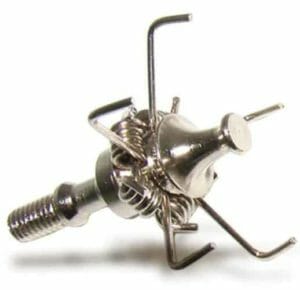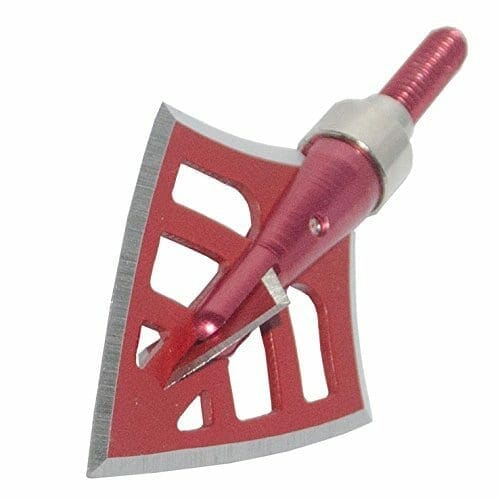Archery can be split into 3 main camps: hunting, competitive and recreational. Depending on where you are in the world, the popularity of each varies.
Bowhunting seasons and restrictions vary between locations and the hunter must bear this in mind. Some countries prohibit bowhunting, such as the United Kingdom which banned the sport in 1965; it is very popular in regions such as the United States, Canada and Australasia.
In the USA, bowhunting is regulated and usually a special season is set aside. This is to prevent interference from rifle hunters, another very popular sport in the USA. There are often technical regulations which must be strictly adhered to, such as a minimum draw weight, lack of barbed arrow points and a minimum width of arrow head. This is to allow maximum game recovery and lethality of the shot.
With this is mind, the bowhunter should choose his arrow point wisely. After all, you don’t want to find yourself on the wrong end of the law. For the complete novice, the arrow point (or tip) is the sharp point on the end of the arrow. Arrow points are available in various shapes, styles and weights and each one is targeted at a specific purpose.
There are various factors to consider and the best arrow point to use depends very much on the individual style and needs of the archer.
Check out this article for the best broadheads for turkey hunting.
And this one here for the best broadhead in deer hunting.
Types of Arrow Points
Field and target points are designed for the target archer, to be used on the range rather than to kill. They can also be made to weigh the same as the bigger game arrowheads, for hunters to use in practice shots. This can minimize the bow sight adjustments needed during hunting, allowing the hunter to focus fully on the end game.
Judo (or grabbing points) are designed for field practice and simulated hunting scenarios. They weigh the same as most of the popular game broadheads and have small wire springs protruding on the arrowhead. These are also known as grabbing hooks and are designed to prevent the arrowhead from disappearing into ground cover.

Blunt points are designed to be used for small game hunting, the likes of rabbits and geese. They are constructed from plastic, rubber or steel and are flat in shape, rather than pointed. The tip is flared to create a much wider striking surface; designed to kill by shock rather than by cutting vital tissues.
Bowfishing points are made of steel and have a strong screw-off or retractable barb. This is to allow retrieval of the fish and is designed to penetrate the hard scales of rough fish, such as carp.

Broadheads are most commonly used for hunting big game, such as deer and bears, and are varied in type: fixed blades, removable blades and mechanical (or expandable) blades. All types must be sharp and durable, as well as being matched correctly to the bow being used and the size of game being hunted. They deliver a low-energy impact and so must be properly placed for the kill, known as the ‘kill shot’. They are a dangerous arrow point and should be used carefully. Their aim is to cut through vital blood vessels to cause huge blood loss, leading to a quick and less painful death for the animal.

Things to consider when choosing the best broadhead arrow tip
Broadhead selection is based largely on the hunter’s experience and the speed at which they shoot. The game being hunted is also important, as this can vary greatly in size. To make things easier, we have published a post about this year’s best broadhead review, check it out.
Broadheads can differ in flight to target points, though this tends to be minor. It is wise to practice first with points similar to broadheads, such as grabbing points, in the field. Shot accuracy is key and you don’t want to spend all of your time re-sharpening points due to inaccurate and wasted shots. It is also preferable to perfect your technique before shooting at animals, as you will be less likely to maim and more likely to kill. After all, the hunter should have the utmost respect for their kill at all times and hunt in an ethical and safe way. Game hunters should always aim for the chest cavity, not the stomach cavity. Broadheads can still cause death when they strike the neck and legs but these shots should not be attempted. This is due to the much smaller target area.
Fixed blade broadheads are so called due to them having no movable parts. They are the most popular and easiest to use. They are very sharp, so handle with care, as they are designed specifically to kill large game. The majority if not all broadheads can be re-sharpened, which is handy because they can be damaged if shot at a hard surface, such as a tree or rock. They are designed to pass straight through an animal and can therefore hit a hard surface upon exit. So even the most accurate hunters will still need to sharpen their broadheads over time.
Check out this article on how to choose the best fixed blade broadhead.
Removable blade broadheads
These are a very popular type of fixed blade broadhead due to the hunter not having to re-sharpen the blade’s edges, which can be a little tedious.
Mechanical broadheads
Technology has advanced considerably in the past 5 years, meaning mechanical broadheads can start to leave their negative reputation behind. Modern mechanical broadheads deliver much better penetration and cutting, which results in cleaner and more effective entrance and exit wounds.
The main advantage of mechanical broadheads is that they fly much closer to field points and require very little tuning once set. You must make sure you tune your bow to gain maximum performance. These broadheads are available with diameters of up to 2 ¾ inches but hunters should ensure they adhere to regional hunting regulations before choosing the size. An arrowhead with a smaller diameter will give better penetration and are more suitable for hunting large game. Here are some advice on choosing the best mechanical broadheads.
Check out the video below for a mechanical broadhead field test.
Final Check
Once you have chosen the best broadhead for you, you must then choose the correct weight for your requirements. Industry experts recommend 100-grain heads for carbon and lightweight aluminium shafts and 125-grain heads for heavy aluminium shafts.
Always ensure your bow and arrow is correctly set up and check head alignment. You can do this by spinning the arrow to ensure it does not wobble. You can also check the sharpness of your broadhead, by tightly stretching some rubber bands over a small opening and shooting the arrow at it. If it passes through easily, the arrow is sharp enough to hunt with
